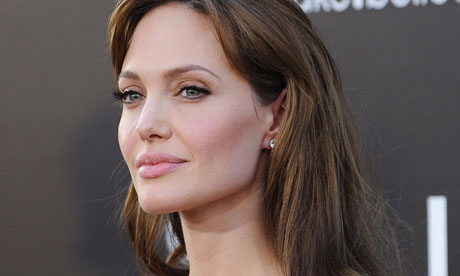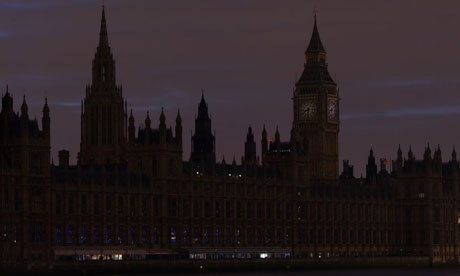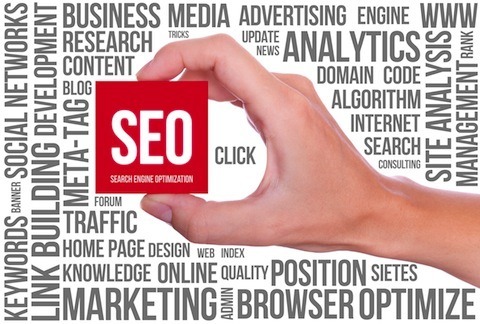
Are you tired of building links the old school way? You know, the methods that require you to send out emails to thousands of webmasters begging for links. Don’t get me wrong, they still work well, but they get boring after a while.
So what other ways can you build links?
Well, there are a handful of creative strategies out there. Here are
11 fun ways you can build links without burning yourself out:
Strategy #1: April fools

April fools is coming up soon, so why don’t you leverage it to build
links. You shouldn’t do an April fools joke that’s obvious, instead you
should take a page out of TechCrunch’s book and follow their strategy.
They wrote a blog post on March 31
st a few years ago on Richard Rosenblatt’s yacht, which was called “The AdSense”. A lot of people believed the post was real and over 600 people tweeted about it and some even linked to it.
The key to creating a good April fools joke is to make it realistic.
Do something the day before April 1st and go above and beyond to make it
seem realistic. TechCrunch got Rosenblatt to record his voice talking
about the post, which made it seem more realistic.
If you want your April fools idea to build links, it has to be good.
You can’t do something mediocre.
Strategy #2: Interview experts

One of the easiest ways to build links is to interview experts. If
you email someone on how great they are and how you want to interview
them, it’s rare that they will say no.
I myself get asked to do around 4 interviews each week and
I never say no. I’ve also emailed dozens of other people to interview them and it’s also rare that they say no…
this even worked when my blog wasn’t popular.
So how do you build links when you interview an expert? Well most
experts have a website, so once you interview them you can ask them to
share it with their readers or even tweet and post it on Facebook.
I’ve found that over 90% of the time people will at least share the
interview on Twitter and Facebook and over 40% of the time people will
link to it from their website. One trick to boosting your link
percentage chance is to look and see if people have a press page before
you ask them for an interview. If they have one, the chance of them
linking to your interview is over 95%.
Strategy #3: Infographics

This is my favorite method of building links, as I love making complex data easy to understand. Mint
used this strategy heavily in their early days, in which they made
complex financial data easy to understand through beautiful graphics.
We also do this at KISSmetrics as our infographics have received over 3741 links.
So what’s the key to generating links from your infographics? Well
you first need to have an embed code at the bottom of each infographic
so people can link back and secondly you should follow the promotion strategies in this blog post.
Strategy #4: Quizzes

You may know Matt Inman as the guy behind the Oatmeal,
but most of us SEOs know him as the master of quizzes. He got his start
at SEOmoz in the early days and then the started getting into link
creation through linkbait.
He ranked Mingle2 for all of the online dating terms by creating viral quizzes such as: how many 5 year olds can you take in a fight. He then took that same strategy and got a payday loan site ranked for all of the payday loan related keywords.
Matt currently has quizzes on The Oatmeal
and you should consider replicating the strategy if you want to build
thousand of links. Just be careful as both his dating site and payday
loan site got dinged by Google,
but you shouldn’t have that problem if you follow these rules though:
- The quiz needs to be related to your website – don’t try to create a quiz about fighting 5 year olds if you run a dating website.
- Don’t use rich anchor text – at the end of each
quiz is an embeddable badge that shows off your score, that badge
shouldn’t contain rich anchor text. The anchor text should be the name
of the quiz.
- Link to your quiz page – don’t have the badges link to your homepage, they should link back to the quiz.
Strategy #5: Personalized videos
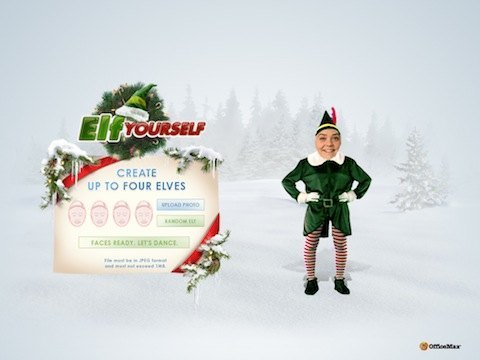
Do you remember Elf Yourself?
JibJab created that campaign for OfficeMax and hundreds of thousands of
people Elf’d themselves. In which they uploaded a picture of their face
and JibJab created an Elf video out of it.
At the end of the video, you were given a link that you can share with others or post on your blog.
According to Open Site Explorer, Elf Yourself has over 10,000 links. Not too shabby for a Christmas promotional video.
If you can come up with a creative video concept that allows people
to personalize the video, you can leverage it to build links. People
love sharing funny personalized videos.
Strategy #6: Sponsor an event

One of the simplest ways to build links is to sponsor an event.
Conference sites list out each and every single sponsor and in most
cases they link back to their sponsors.
This may not seem like a fun idea or creative link building strategy, but just think about this…
you’ll be able to go to the conference.

If you work in the corporate world you may get a bit tired of working
in the office, so it will be a nice for you to get a break by attending a conference. Plus, you’ll get a link out of it.
When getting links from conference sites, keep in mind that they
maybe taken down in the future, which means you will have to continue to
sponsor the event each year. The cost can quickly add up if you are a
small company,
but it’s fun to go to conferences.
Strategy #7: Sponsor a non-profit

I love the non-profit world because it’s a great way for you to give
back to the rest of the world. If you sponsor a non-profit in many cases
you can get a link back.
When I used to own KISSinsights
we used to give away our product for free to non-profits and they would
link back to us. We came up with this concept when a non-profit asked
us for a free account in exchange for press on their blog.
The beautiful part about this strategy is that it doesn’t require an
exchange of cash. You can volunteer your time, your products, or even
services for a link. Whatever it maybe, I’ve found that non-profits are
open to almost anything as they don’t have a big spending budget.
Strategy #8: Take some pictures

There are always people looking for images,
especially high quality stock photography images. I myself don’t mind paying for images, but it can get expensive really fast.
If you have a really good digital camera, such as an SLR, you can go
out there and take high quality photos of anything related to your
industry. Then pop them up on a page on your website and let people know
that they are royalty free images. Just make it a requirement that
people need to link back to you if they decide to use any of your
images.
The cool part about this strategy is that you are going to get highly
relevant links, as people in your industry are most likely to use them.
Strategy #9: Scholarships

Ross Hudgens is an SEO that’s known for building tons of high quality EDU links. And he is doing so without spending much money…
so how does he do it?
Well he creates scholarships related to your company. It’s a great
way for you to give back and get links at the same time. For example, if
you are a marketing agency, you could create a digital marketing
scholarship in which you give 1 student $1000 a year.
Once Ross creates the scholarship, such as a marketing one, he would
notify all colleges that have a marketing department about the
scholarship. The end result is hundreds of EDU links as colleges will
put it on their website to notify students.
The one thing you have to do if you want to create a scholarship is
make it a “real one”. SEOs are trying to create them just to build
links. Make sure it is legitimate; you have to give money away each
year, and if possible try to help the winner of the scholarship out. For
example, if I created a marketing scholarship, I would give away money
and even provide the winner with a paid internship.
Strategy #10: Get press
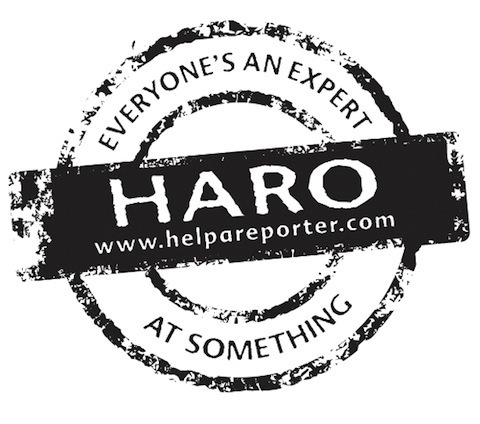
The side effect of getting press is that you’ll build more links to
your website. It’s rare that a site like Forbes would write about your
company and then not link to it.
That’s just not user friendly, which is why reporters always
link to you when they cover you or your company. If you want to build
links, why not get press for your business or your entrepreneurial
success?
Hit up your local PR agency and see what they can do for you. Or if you don’t have a ton of cash, learn how to get your own press or just use sites like Help a Reporter Out.
I myself just hire PR agencies like PRserve in which they run a pay per performance model. If they get you press, you pay. If not, you don’t pay a dime.
Strategy #11: Give away swag

Some people love free stuff. It doesn’t matter if it is expensive or
cheap stuff, people love getting gifts. One person who talks about all
of the free stuff he gets is Shoemoney.
Every Friday he takes a picture of him wearing a new t-shirt that someone gave him. He then blogs about the shirt and links back to the company who gave him the shirt.
Get creative and start giving bloggers swag. From shirts to hats, to
items, to anything else that is related to your brand, just start giving
things away. Not only will bloggers love you, but they will start
blogging about your company and linking back to your website.
Conclusion
The possibilities of link building are endless. You can build links
in many different ways, you just have to be creative. What I’ve learned
over the years is the best link builders are the creative ones.
Just look at Matt Inman, no one would have thought that he would rank
a site for online dating, but he was able to do it in a matter of
months because of how he built links.
All you have to do is think outside the box as the list above is just
scrapping the surface. What other creative ways are you building links?
